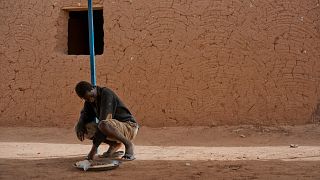Cameroon
Swarms of granivorous birds are wreaking havoc in the millet fields of Logone and Chari in the far north of Cameroon.
The millet farmers cannot do anything about the fury of these birds from the Lake Chad area.
"Before, for a good harvest, we could get 10, 12 or even 20 full cars out of the fields. But this year, look, we couldn't even reach that quantity. If you manage to come back with a full car like this one, you'll only have 6 or 7 bags, others have abandoned their millet in the field because of these birds'', said millet farmer, Goni Moussa.
Some producers, such as Abba Massanga, known as a great millet farmer in Waza, have spent their days chasing these birds from their plots with their families.
Others were forced to abandon their millet or destroy their crops. The plants had to be cut and laid down before the millet reached maturity.
"We were forced to lay down this millet that is not yet mature, and this is the impact it has had on us. It is a great loss for the farmers in the region'', Abba Massanga, a millet farmer said.
According to statistics from the Cooperation France-Cameroon (ACEFA), Sorghum or millet occupies 50% of the cultivable area in the far north of Cameroon, making it the region's main crop and food staple.
Madame Oummoul is the Coordinator of ACEFA’s far north program.
"When production is low like this, it affects the supply available on the market. Already when you can't produce enough to feed yourself and sell, there is low production. Secondly, when you try to follow the evolution of grain prices on the market, you realize that there is a fluctuation'', she told Correspondent Joel Honoré Kouam.
The passage of migratory birds will have an adverse effect, not only on the harvest and sales, but on the food supply of millions of people, leading to an unprecedented food crisis.












00:49
Teachers strike shuts down schools across Cameroon
00:53
Brazil eyes global food leadership amid U.S.-China trade tensions
Go to video
Oligui Nguema: A breakthrough or continuity for Gabon? [Business Africa]
Go to video
Sudan: World Food Programme warns of hunger crisis, asks for more funding
01:02
First payments made to white farmers affected by land reforms in Zimbabwe
Go to video
A booming market, but lacking data: Africa's challenge [Business Africa]